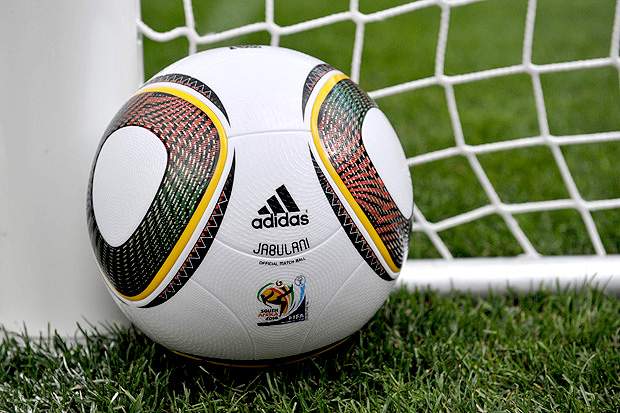So will things get even weirder since the 2010 ball has new ridges and grooves? They sure will, say physics experts at the University of Adelaide who believe the new Jabulani ball will play "harder and faster", bending even more unpredictably than its predecessor.
But why, and what will it mean for the World Cup?
A free public lecture about the aerodynamics of the new World Cup soccer ball was held at the University of Adelaide in the Chapman Lecture Theatre, room N158, in the Engineering North Building, North Terrace Campus - at 6.30pm today.

Jabulani. Credit: The University of Adelaide
"The Jabulani is textured with small ridges and 'aero grooves' and represents a radical departure from the ultra-smooth Teamgeist ball, which was used in the last World Cup," says Professor Derek Leinweber, Head of the School of Chemistry&Physics at the University of Adelaide, who has previously written about and lectured on the aerodynamics of cricket balls, golf balls and the 2006 World Cup soccer ball, the Teamgeist.
FIFA has strict regulations on the size and weight of the balls but makes no regulations about the outside surface of the balls.
"The Teamgeist was a big departure at the last World Cup. Because it was very smooth – much smoother than a regular soccer ball – it had a tendency to bend more than the conventional ball and drop more suddenly at the end of its trajectory. By comparison, the aerodynamic ridges on the Jabulani are likely to create enough turbulence around the ball to sustain its flight longer, and be a faster, harder ball in play.
"The Jabulani is expected to 'bend' more for the players than any ball previously encountered. Players are also discovering new opportunities to move the ball in erratic ways, alarming the world’s best goalkeepers. By the time the ball reaches the goalkeeper, the Jabulani will have swerved and dipped, arriving with more power and energy than the Teamgeist."





Comments